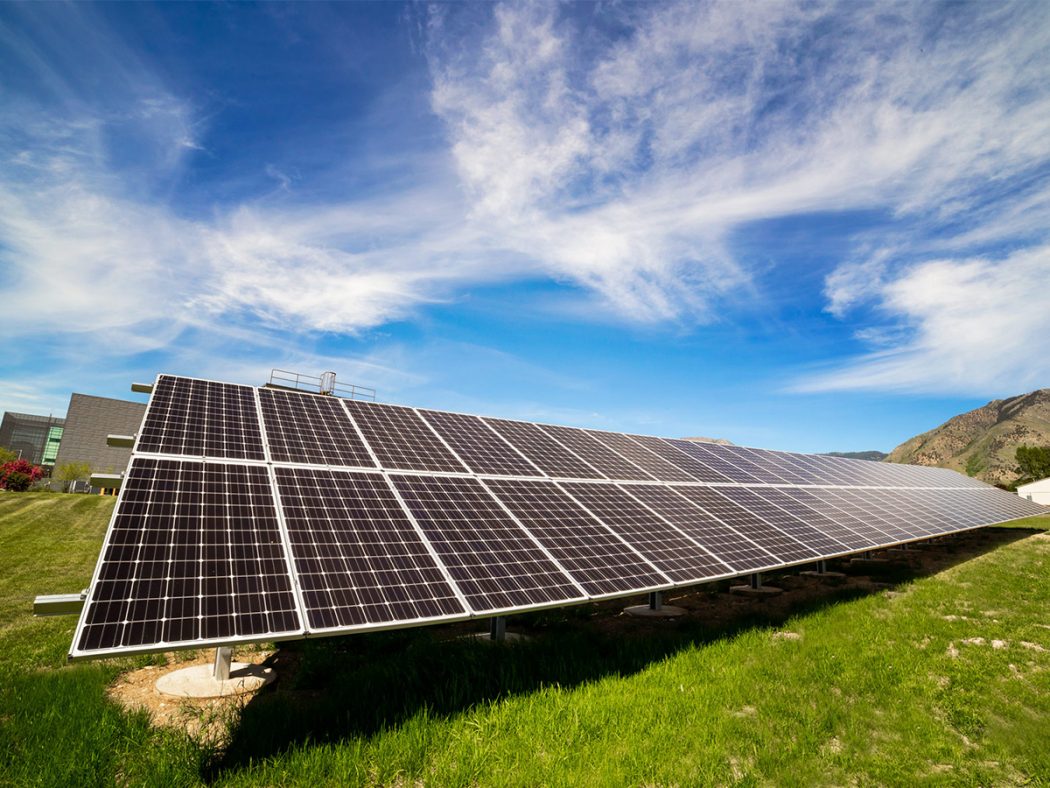Utah State University Electric Vehicle & Roadway Research and Test Track Facility to get largest solar array on campus
The Electric Vehicle & Roadway Research and Test Track Facility at Utah State University is installing the largest solar array on campus, and researchers said the new array will help power their vision of their future.
“That will be enough, coupled with the energy stored in this facility, to run all the energy in this lab — and this is an energy consuming lab,” said David Christensen, executive director of the Sustainable Electrified Transport Lab, or SELECT.
The lab already uses a 20 kW array, and is installing 108 kW above a new retention pond to capture drainage.
“We made a trade with facilities,” Christensen said.
The rest of the cost for the panels will be paid by a Blue Sky grant from Rocky Mountain Power, he said.
SELECT was started in 2016 as a project to bring together engineers and industry experts to make electrified transportation more accessible and try to solve associated engineering concerns.
“In a lot of ways, it is a world class facility,” said Ryan Bohm, the lab’s manager. “To make electric vehicles something that works for the masses and can be adapted by all, there are substantial challenges to that. We are working on all those major challenges and trying to solve them.”
The research facility and test track is the only one of its kind in the United States, with the only others like it existing in Europe and South Korea. Christensen and lead researcher Regan Zane host industry leaders and engineers from all over the world to show off the facility.
“You would expect to see this in Detroit or Silicon Valley,” Christensen said. “But those people come here, on a regular basis. They walk away amazed that this exists here, and at this caliber.”
One of SELECT’s most ambitious projects is creating wireless power transfer on roadways — charging electric vehicles as they drive. The test track at the lab is currently outfitted with coils capable of charging the first ever electric bus, and any vehicle outfitted with wireless charging receivers.
“We are past the point of “Can we do it?’ We can do it. Now we are scaling it up,” Christensen said. “The idea is to keep the vehicle at the 60-80 percent charge, the sweet spot for the battery.”
SELECT is electrifying a highway in Illinois later this year, Christensen said, and hopes to install an electric lane in Utah in the near future.
Bohm said they eventually hope to install chargers on one lane on Utah’s Interstate 15, and if Utah hosts the 2030 Olympics, Bohm said the electric lane could be a highlight for foreign visitors.
“We can certainly hope for that,” Bohm said.
Wireless induction has already been implemented by Tesla, BMW, Volvo and other electric vehicle manufacturers, but Christensen said standardizing the systems and working with states to install charging roadways will be the next challenge.
“The transformation has been amazing, but there is still a lot of work to be done,” he said. “We are working on all those major challenges and trying to solve them; to take what used to be just a vision, or completely unknown, and make it feasible for the masses.”
The solar panels will be live in March or April, Christensen said.
— Carter.moore@aggiemail.usu.edu
@CarterTheGrreat

